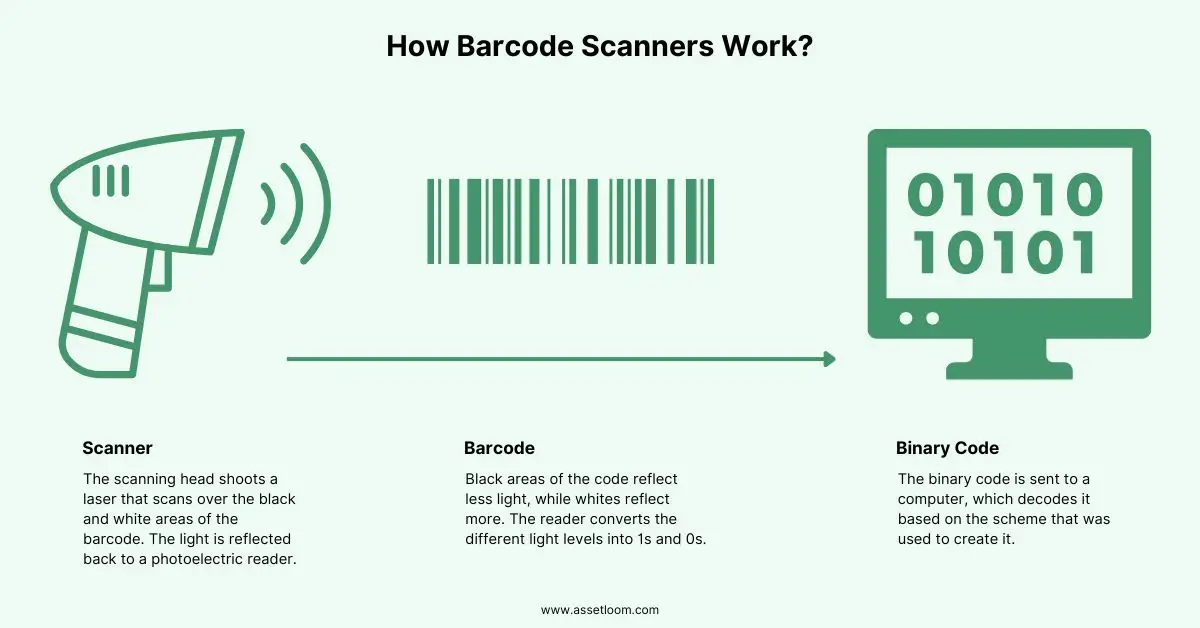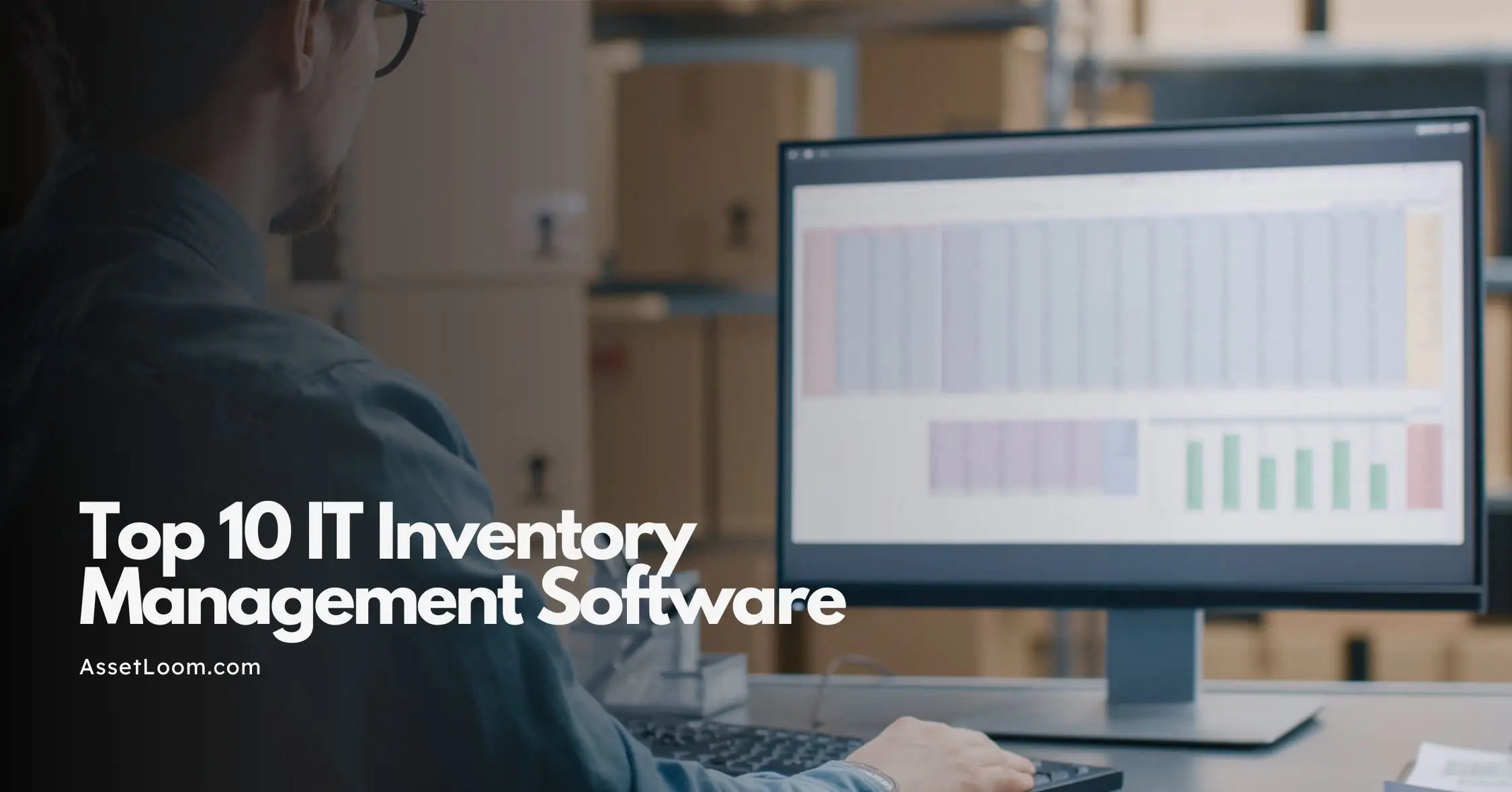What is a Barcode Inventory Tracking System and How Does It Work?
A barcode inventory tracking system is a must-have for every business to keep track of their inventory, IT assets,...
You’re running a small retail shop, a sprawling warehouse, or a manufacturing facility and need to keep track of the inventory? With the development of technology in the 21st century, this task has been done easily with multiple IT inventory management software. One of which is the process of using barcodes to control the stocks. Entering the barcode inventory tracking system—a technology-driven solution that has transformed how businesses manage their inventory.
Keeping track of stock is essential to meet customer demand, reduce waste, and optimize operations. This article dives deep into what a barcode inventory tracking system is, how it works, its components, benefits, and real-world applications, all while emphasizing its critical role in today’s economy.
What is a Barcode Inventory Tracking System?
A barcode inventory tracking system is a method of monitoring and managing inventory using barcode technology. Barcodes—those familiar patterns of lines, shapes, or symbols—are unique identifiers attached to products or groups of items. When scanned, these barcodes provide instant access to critical data, such as product details, quantities, and locations, which are then recorded and managed through specialized software.

This system replaces outdated manual processes like handwritten logs or spreadsheets, offering a faster, more accurate way to track goods from the moment they enter a facility to the point of sale or shipment. Industries such as retail, logistics, healthcare, and manufacturing rely heavily on barcode inventory tracking systems to streamline operations and maintain competitiveness.
Why Barcode Systems Matter in Inventory Management
Inventory management is about more than just counting items—it’s about ensuring the right products are available at the right time. The barcode inventory tracking system eliminates guesswork and human error, providing real-time visibility into stock levels. This precision helps businesses avoid costly mistakes like overstocking, understocking, or losing track of assets, making it an indispensable tool in the digital age.
How Does a Barcode Inventory Tracking System Work?
The functionality of a barcode inventory tracking system hinges on a seamless integration of hardware, software, and standardized processes. Below, we’ll break down the step-by-step mechanics of how it operates, from barcode creation to data analysis.
![]()
Step 1: Barcode Creation and Labeling
The process begins with assigning a unique barcode to each item or batch of items in the inventory. These barcodes encode essential information, such as the product’s SKU (stock-keeping unit), description, price, or expiration date. Businesses typically use inventory management software to generate these barcodes, which are then printed onto labels using specialized printers. The labels are affixed to individual products, packaging, or pallets, ensuring every item is identifiable.
Barcodes come in various formats, including traditional 1D barcodes (lines of varying thickness) and 2D barcodes (like QR codes), which can store more data in a smaller space. The choice depends on the complexity of the inventory and the business’s needs.
Step 2: Scanning the Barcode
Once labeled, items are tracked by scanning their barcodes. This is done using barcode scanners, which come in multiple forms: handheld devices, fixed scanners at checkout counters, or even smartphone apps with camera-based scanning capabilities. When a scanner reads a barcode, it decodes the pattern and retrieves the embedded information instantly.
For example, in a retail setting, a cashier scans a product’s barcode at the point of sale (POS). In a warehouse, workers scan barcodes as goods are received, moved, or shipped. The speed and accuracy of scanning make it far superior to manual counting or data entry.
Step 3: Data Transmission to Inventory Software
After scanning, the barcode data is transmitted to an inventory management system—the digital brain of the barcode inventory tracking system. This software can be a standalone application or part of a broader enterprise resource planning (ERP) platform. The scanner sends the data via a wired connection, Wi-Fi, or Bluetooth, depending on the setup.
The software serves as a centralized database, storing all inventory-related information and ensuring it’s accessible to authorized users. Cloud-based systems have become particularly popular, allowing businesses to access their inventory data from anywhere, anytime.
Step 4: Real-Time Inventory Updates
The magic of a barcode inventory tracking system lies in its ability to update inventory records in real-time. When a barcode is scanned, the software processes the data and adjusts the stock count accordingly. For instance:
- Sales: Scanning a product at checkout deducts it from the inventory.
- Receiving: Scanning incoming shipments adds items to the stock.
- Transfers: Scanning items moved between locations updates their status.
This instantaneous updating eliminates discrepancies between physical stock and recorded data, a common issue with manual methods.
Step 5: Reporting and Decision-Making
Beyond tracking, the system provides powerful reporting tools. Businesses can generate detailed reports on stock levels, sales trends, reorder points, and more. For example, if a product’s inventory drops below a set threshold, the software can trigger an alert to reorder. These insights empower managers to make data-driven decisions, optimizing inventory flow and reducing costs.
Key Components of a Barcode Inventory Tracking System
A barcode inventory tracking system relies on several core components working in harmony. Understanding these elements sheds light on why the system is so effective.
![]()
Barcodes
Barcodes are the foundation of the system. They adhere to global standards like UPC (Universal Product Code) or EAN (European Article Number), ensuring compatibility across supply chains. 2D barcodes, such as QR codes, are gaining traction for their ability to store more complex data, like URLs or batch details.
Barcode Scanners
Scanners are the tools that bring barcodes to life. Options range from affordable laser scanners to advanced mobile devices with built-in cameras. Some systems even use RFID (radio-frequency identification) alongside barcodes for enhanced tracking, though RFID is typically more expensive.
Inventory Management Software
The software is the backbone of the barcode inventory tracking system, storing and processing all scanned data. Modern platforms offer features like cloud integration, multi-user access, and compatibility with POS or accounting systems, making them versatile for businesses of all sizes.
Labels and Printers
Durable, high-quality labels are crucial for ensuring barcodes remain readable throughout a product’s lifecycle. Barcode printers—thermal or inkjet—produce these labels, often with customizable designs to meet specific industry needs.
Benefits of Using a Barcode Inventory Tracking System
Why do businesses invest in a barcode inventory tracking system? The advantages are numerous and impactful.
Improved Accuracy
Manual inventory methods are prone to errors—misread numbers, skipped items, or typos. Barcodes eliminate these issues by automating data capture, ensuring records match reality.
Increased Efficiency
Scanning a barcode takes seconds, compared to minutes spent manually counting or logging items. This speed saves time for employees and accelerates processes like receiving, shipping, and sales.
Real-Time Visibility
With real-time updates, businesses always know their stock levels. This visibility is critical for avoiding stockouts, planning restocks, and responding to customer demand.
Cost Savings
Accurate tracking reduces losses from overstocking (tying up capital) or understocking (missed sales). It also helps detect theft or shrinkage, protecting profits.
Scalability
Whether you manage 100 items or 100,000, a barcode inventory tracking system scales effortlessly. Small businesses can start with basic setups, while enterprises integrate it into complex supply chains.
Real-World Applications of Barcode Inventory Tracking Systems
Retail
In retail, barcode systems shine at the POS. Scanning products during checkout updates inventory instantly, while back-end reports help managers reorder popular items. For example, a clothing store can track sizes and colors sold, ensuring they restock what customers want.
Warehousing and Logistics
Warehouses use barcode scanning to manage incoming shipments, track goods across zones, and prepare orders for shipping. A scanned barcode on a pallet can confirm its contents and destination, reducing errors in fulfillment.
Healthcare
Hospitals use barcode systems to track medical supplies, medications, and equipment. Scanning a patient’s wristband and a drug’s barcode ensures the right dose is administered, enhancing safety.
Manufacturing
Manufacturers track raw materials, work-in-progress items, and finished goods with barcodes. This ensures production lines run smoothly and inventory aligns with demand forecasts.
Conclusion
The barcode inventory tracking system is more than just a tool—it’s a game-changer for businesses seeking efficiency, accuracy, and growth. By combining barcodes, scanners, and software, this system simplifies the complex task of inventory management, delivering real-time insights and cost-saving benefits. From small startups to global enterprises, its scalability and versatility make it a must-have in today’s competitive market.
As technology evolves, barcode systems continue to adapt, integrating with innovations like AI, IoT, and advanced analytics. For now, though, the humble barcode remains a reliable cornerstone of inventory control, proving that sometimes the simplest solutions have the greatest impact. Whether you’re looking to streamline operations or gain better control over your stock, adopting a barcode inventory tracking system could be the key to unlocking your business’s potential.

Subscribe for Expert Tips and Updates
Receive the latest news from AssetLoom, right in your inbox.


